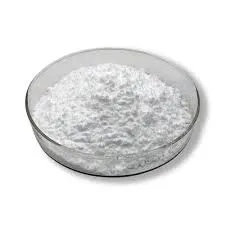
Dec . 19, 2024 04:58 Back to list
hydroxyethyl cellulose solubility
Understanding Hydroxyethyl Cellulose Solubility Properties and Applications
Hydroxyethyl cellulose (HEC) is a non-ionic, water-soluble polymer derived from cellulose, functioning as a thickening, stabilizing, and film-forming agent in various industries. Its unique chemical properties make it an essential component in many applications, including pharmaceuticals, cosmetics, food products, and construction materials. This article aims to explore the solubility of hydroxyethyl cellulose, its significance, and its diverse applications.
Solubility Characteristics
The solubility of hydroxyethyl cellulose is primarily influenced by its molecular weight, degree of substitution, and pH of the aqueous environment. Generally, HEC is soluble in cold and hot water, but it has limited solubility in organic solvents. Its solubility is significantly impacted by the temperature of the water; higher temperatures typically enhance its ability to dissolve.
HEC consists of hydroxyethyl groups that replace some of the hydroxyl groups on the cellulose backbone. This modification facilitates hydrogen bonding with water molecules, contributing to its solubility. The ideal conditions for HEC dissolution involve using distilled or deionized water, as impurities in tap water can hinder solubility and possibly yield varying viscosity profiles.
Factors Affecting Solubility
1. Molecular Weight HEC is available in different molecular weight grades, ranging from low to high. Lower molecular weight HEC tends to dissolve more easily in water than higher molecular weight counterparts. Consequently, applications requiring higher viscosity often utilize high molecular weight HEC, which necessitates more careful control of dissolution conditions.
2. Degree of Substitution The degree of substitution (DS) refers to the average number of hydroxyethyl groups per glucose unit of the cellulose structure. A higher DS results in improved water solubility, enhancing the polymer's ability to interact with water molecules. Manufacturers often adjust the DS to tailor the solubility and viscosity of HEC for specific applications.
3. pH Levels The pH of the solution plays a vital role in determining the solubility of HEC. Neutral to slightly alkaline conditions (pH 7 to 8.5) are typically preferred for optimal dissolution. Extreme acidic or basic conditions can lead to hydrolysis, altering the properties of HEC and affecting its performance in various formulations.
hydroxyethyl cellulose solubility

Applications of Hydroxyethyl Cellulose
Hydroxyethyl cellulose is renowned for its versatility, leading to a multitude of applications across various industries
- Pharmaceuticals In the pharmaceutical industry, HEC serves as a binder and thickener in tablet formulations, providing the necessary consistency for effective drug delivery. Its ability to form gels also makes it suitable for sustained-release formulations.
- Cosmetics In cosmetics, HEC is used to enhance the viscosity and stability of products such as creams, lotions, and gels. Its non-irritating nature makes it a popular choice for sensitive skin formulations.
- Food Products In the food industry, HEC is employed as a thickener and stabilizer in sauces, dressings, and dairy products, improving texture and mouthfeel without altering flavor profiles.
- Construction HEC is utilized in construction materials such as cement and plaster as a water retention agent, ensuring optimal workability and adhesion during application.
Conclusion
The solubility of hydroxyethyl cellulose plays a critical role in its functionality across numerous applications. Understanding the interrelated factors that influence its solubility, such as molecular weight, degree of substitution, and pH, is essential for manufacturers to optimize product formulations. As industries continue to seek innovative solutions, the demand for versatile polymers like HEC remains strong, solidifying its place as a vital ingredient in modern formulations. The capacity of HEC to enhance the performance of products in pharmaceuticals, cosmetics, food, and construction underscores its importance in both traditional and emerging markets.
-
Versatile Hpmc Uses in Different Industries
NewsJun.19,2025
-
Redispersible Powder's Role in Enhancing Durability of Construction Products
NewsJun.19,2025
-
Hydroxyethyl Cellulose Applications Driving Green Industrial Processes
NewsJun.19,2025
-
Exploring Different Redispersible Polymer Powder
NewsJun.19,2025
-
Choosing the Right Mortar Bonding Agent
NewsJun.19,2025
-
Applications and Significance of China Hpmc in Modern Industries
NewsJun.19,2025







